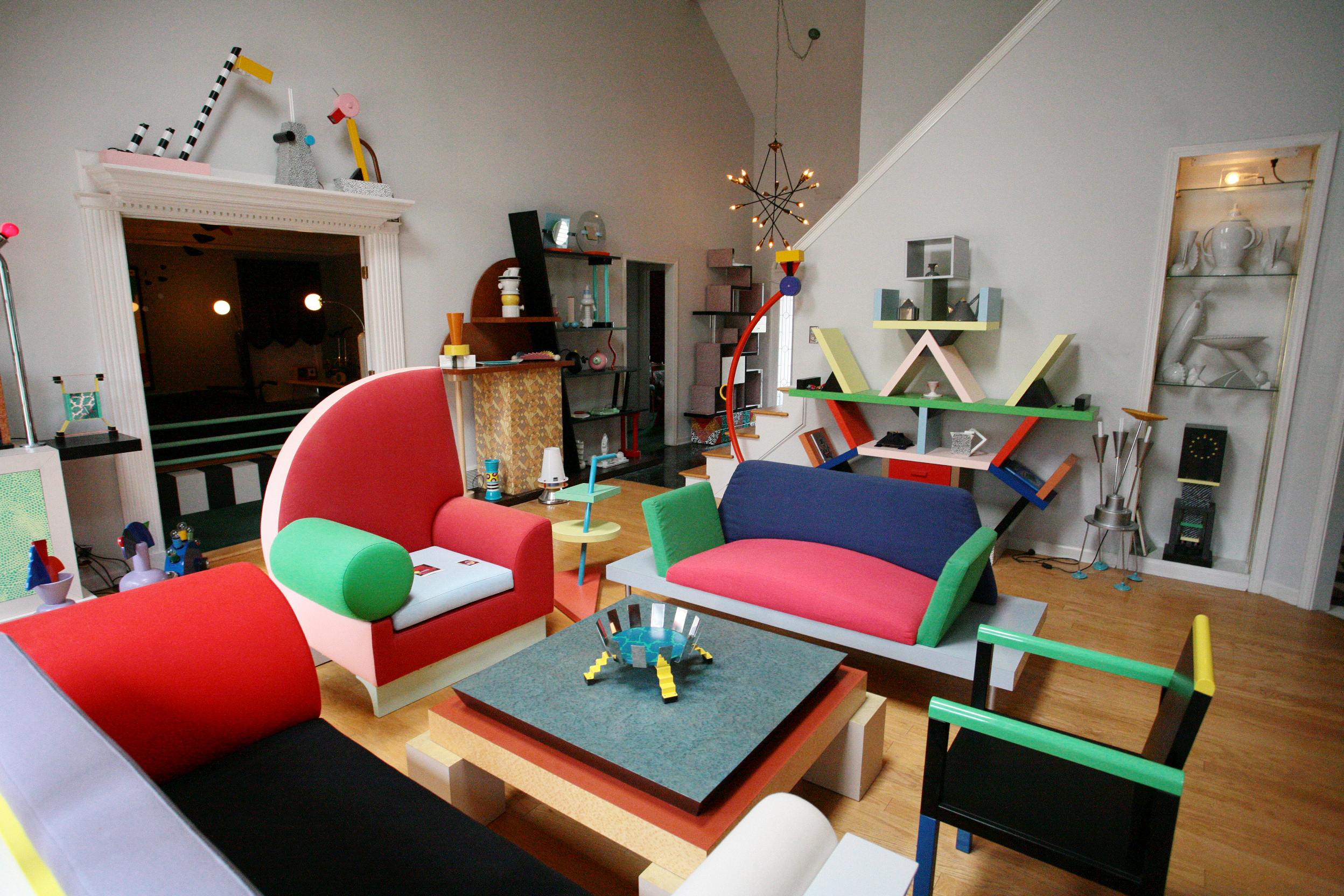MEMPHIS MILANO
Few designers can claim to have had such an enormous impact on late 20th-century design as Austrian-born, Italian-raised Ettore Sottsass. Founding member of Memphis, the collective which began in 1981, Sottsass and around 20 other designers offered a radical and unexpected twist to furniture design. Style and aesthetics were key. The colourful, asymmetrical and eccentric works rejected modernist design principles and became functional works of art. Influenced by art deco, pop art and punk, Sottsass has become a byword for postmodernist design. For Dennis Zanone, Memphis will never go out of fashion. A collector for over 20 years, he kindly discusses his spectacular collection via email; a refreshing reminder of the unique and revolutionary Memphis movement.
You started to collect Memphis-Milano over 20 years ago. What do you think sparked your interest in the act of collecting in the first place?
In general I like the discipline and compulsive nature of what it takes to compile as many pieces of an object or movement as possible of anything and sharing them with others.
Did you already know you wanted to start a collection when you bought your first piece? (Michele De Lucchi’s ‘First’ chair)
Yes, I always liked the quirky look of the pieces when I saw them in late 1984 at an exhibition here in Memphis. I never meant to build the collection as large as it is but one piece led to another, then an interest turned into an obsession.
Do you collect anything else? - if so, might I ask what?
No, only Memphis and a narrow focus of Memphis-related or inspired pieces such as the ‘Objects for the Electronic Age’ line designed by Memphis designers George Sowden and Natalie du Pasquier for the Arch’74 studio that held the first Memphis show during but not as part of the ‘Salon del Mobile’ furniture design show of Milan in 1981.
Have you set any boundaries for your collection? What are they?
Just the narrow subset of postmodern that is Memphis-Milano. I try to stay away from other postmodern unless there is a connection to Memphis somehow. There are many “Memphis-influenced” pieces but I’m not interested in owning them.
Do you have any doubles in your collection? If so, what made you decide to buy more than one?
I try to avoid having two of the same piece unless it’s something like a chair or small lamp that would be paired. If a piece comes up at auction at a reasonable price I’ll place a bid even if I have it already but I’ve sold duplicate pieces to make room for pieces that I do not have in my collection.
Tell me a little bit about how your collection is displayed - do you have any doubles in your collection? If so, what made you decide to buy more than one?
My pieces are “displayed” or shown in my home, a little goes a long way to paraphrase Sottsass. I’m running out of room for them and not all can be displayed.
Are you still adding to your collection today? If so, do you think there will come a time when you will stop?
Yes, I’ll buy any piece of Memphis that I can afford, even a piece I’m not that crazy about just because it’s Memphis. This has led to the obsessive nature of collecting for me because knowing of a piece available that I don’t have drives me crazy. I’ll stop when I sell my collection at some point in the future.
Could you give me your top three Memphis pieces and why they are of particular significance to you?
The Tawaraya Ring by Masanori Umeda because it’s very rare and is my bed and I use it every day, second is the Ginza Robot also by Umeda because it’s fun to look at and last the Memphis art glass because of its beautiful colour and shapes.
How does your collection make you feel?
Mostly happy because of the odd shapes and colours, and it seems to bring a smile to most, even those who would never have it in their home.
What do you think it says about you?
That I’m drawn to the odd-ball, satirical and rebellious side of things.
Finally, what does Memphis-Milano mean to you?
Just a different way of thinking about design and how we use it in our everyday lives and that the form can be odd but its function can actually be the same.

